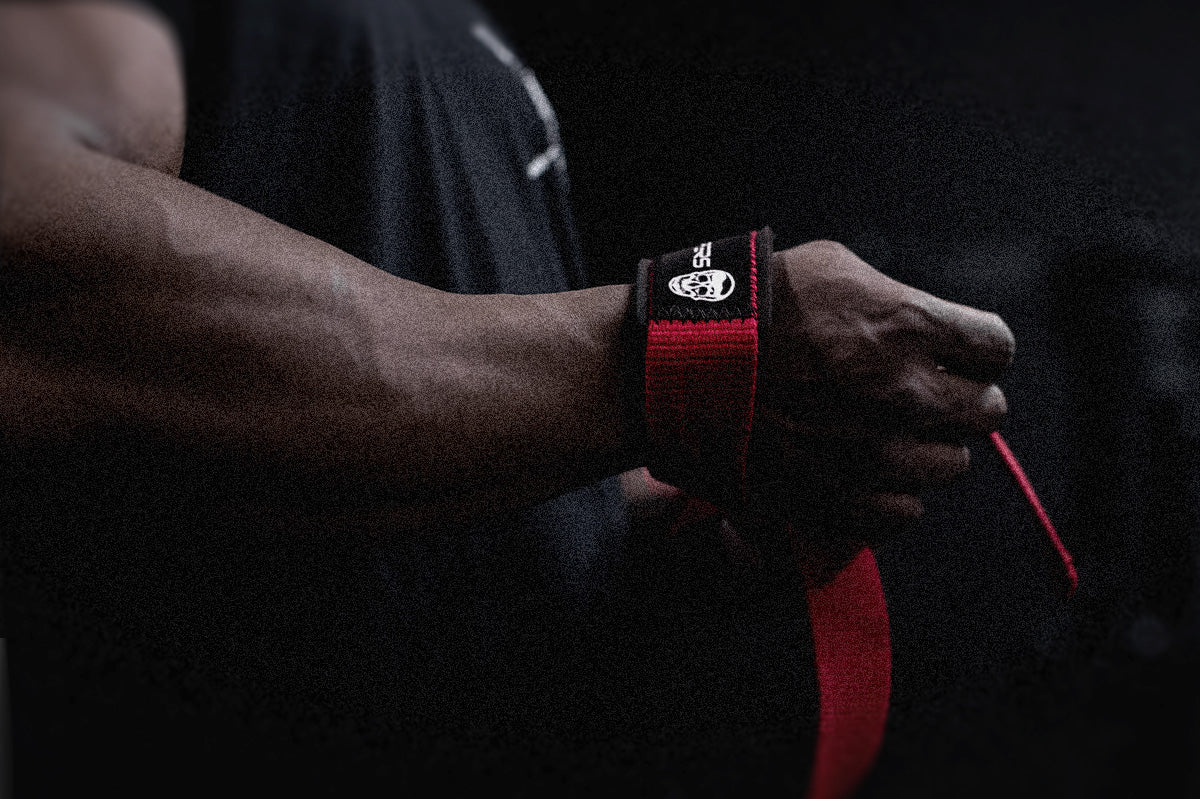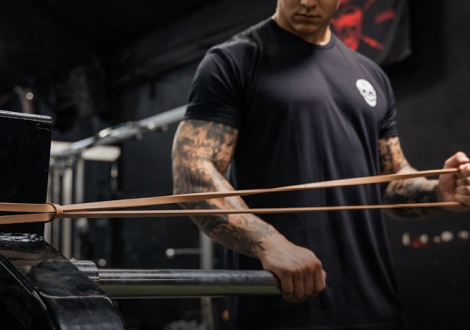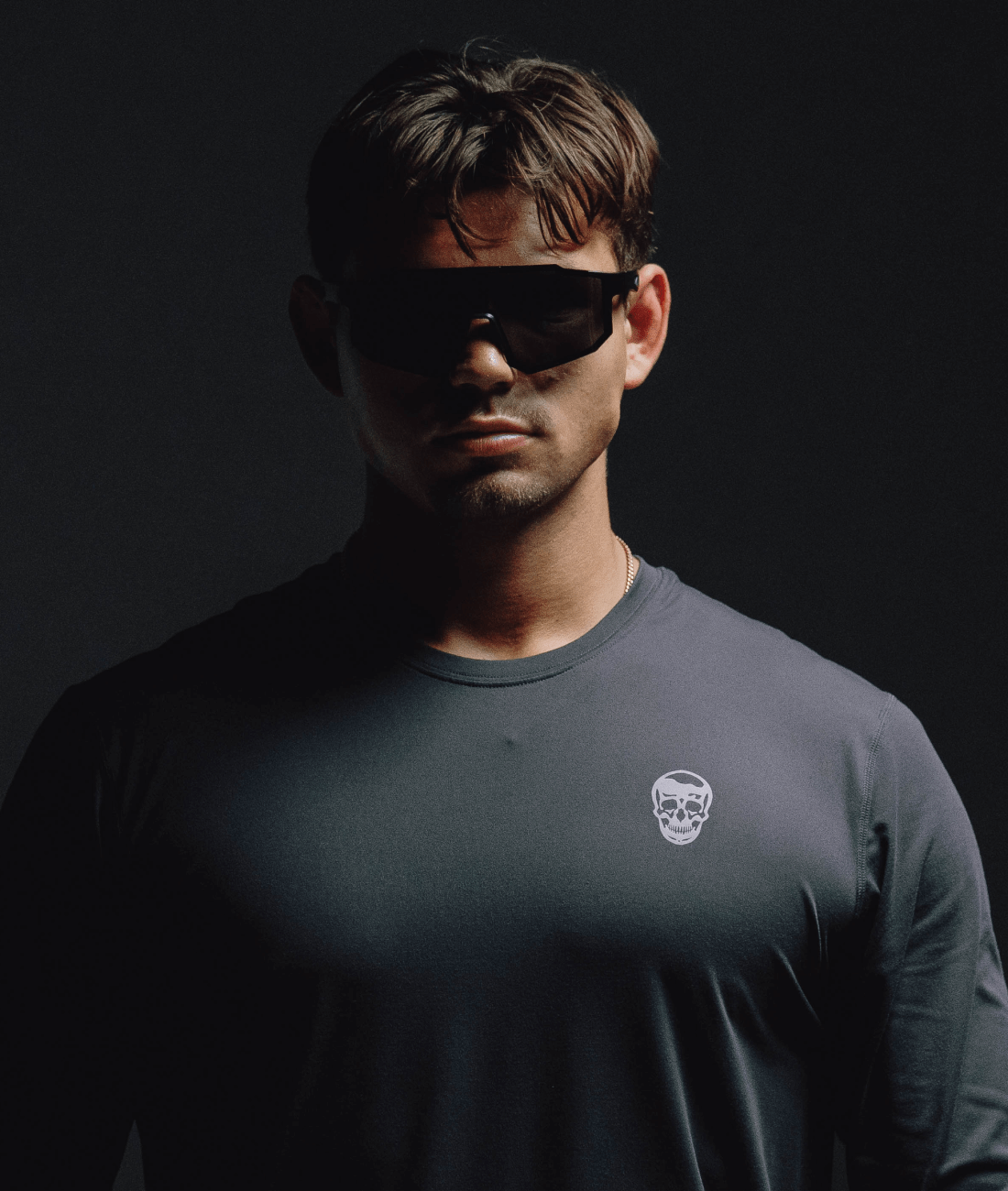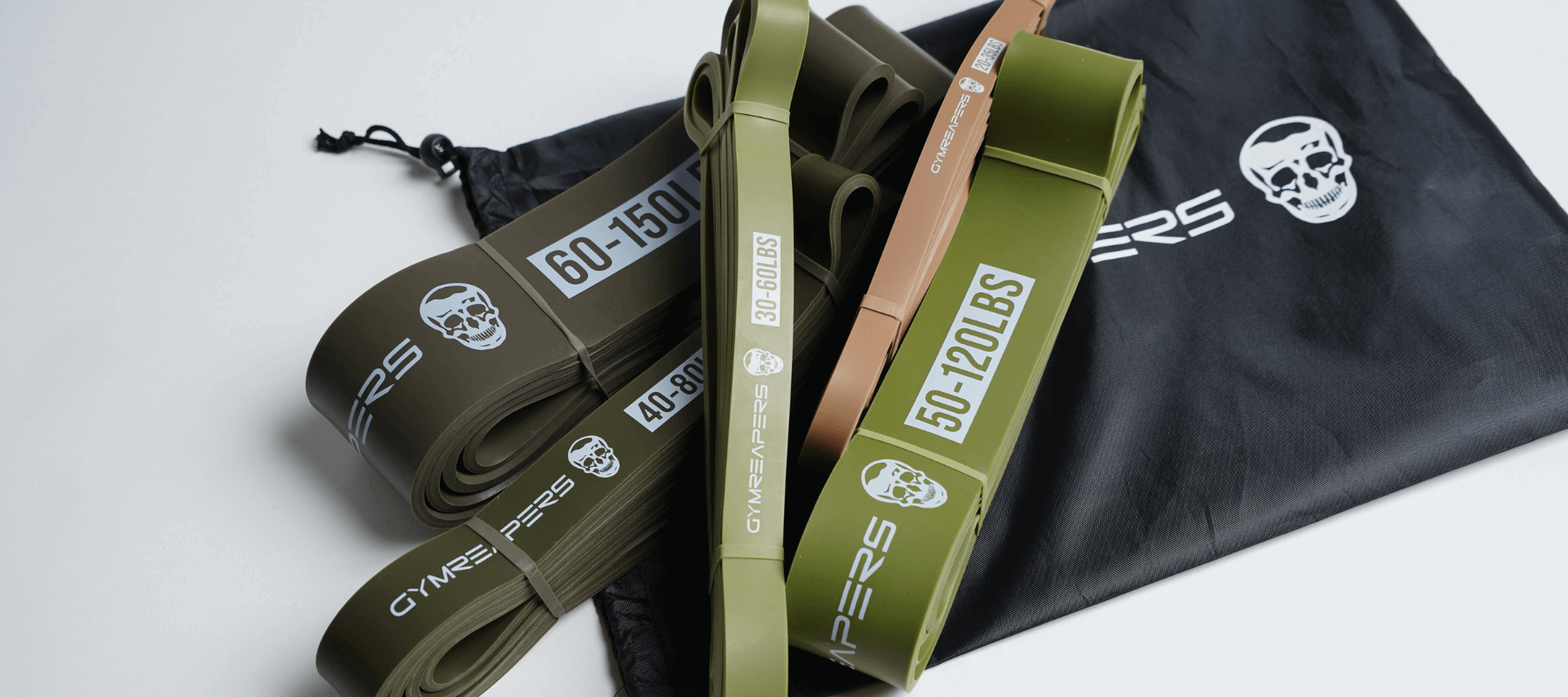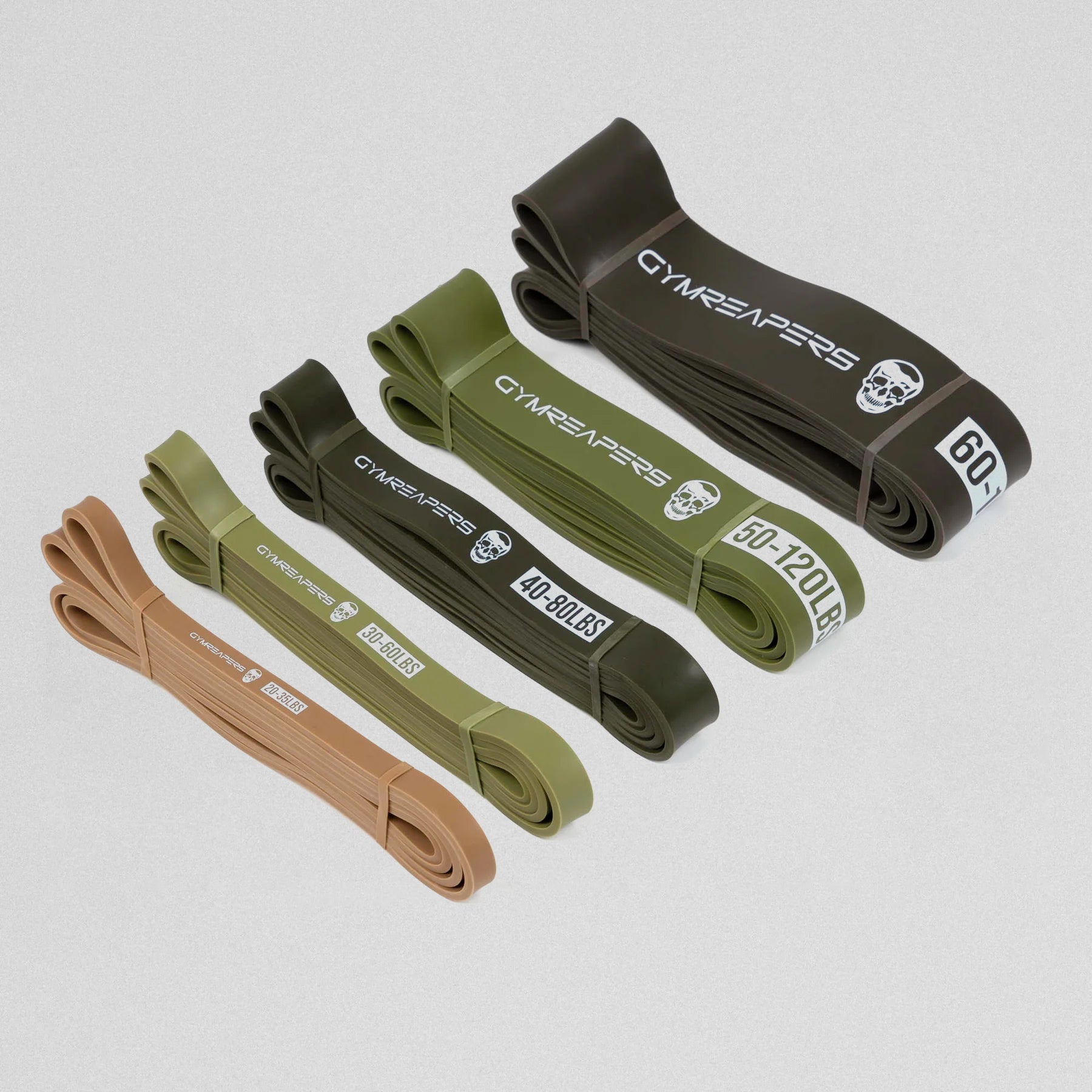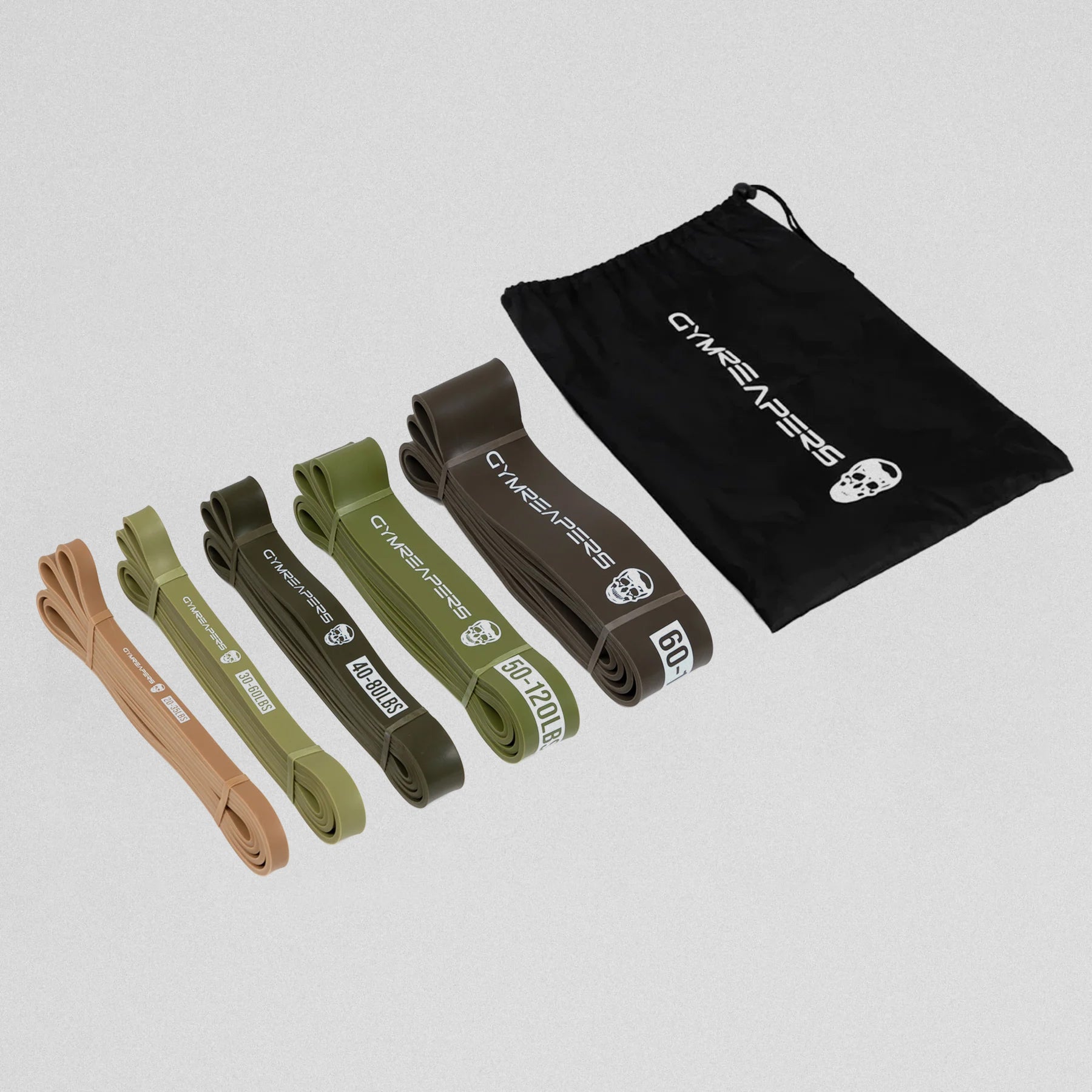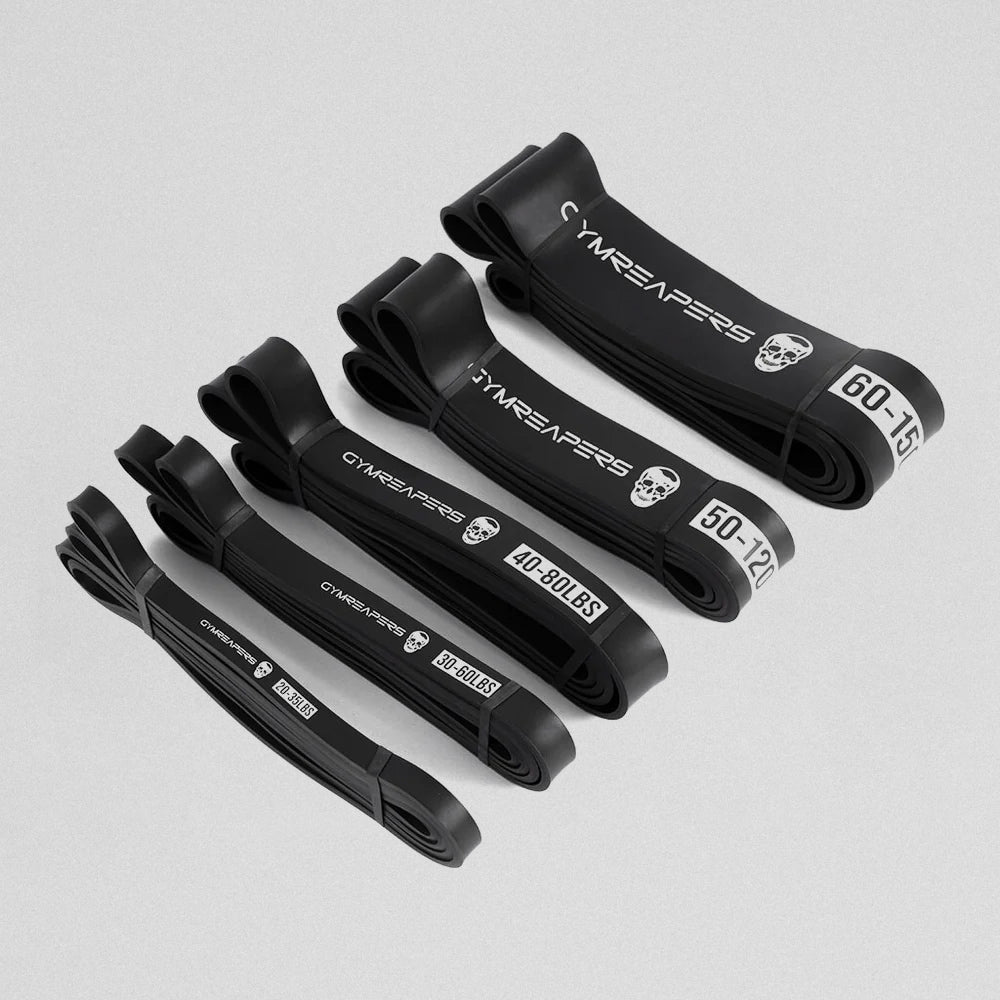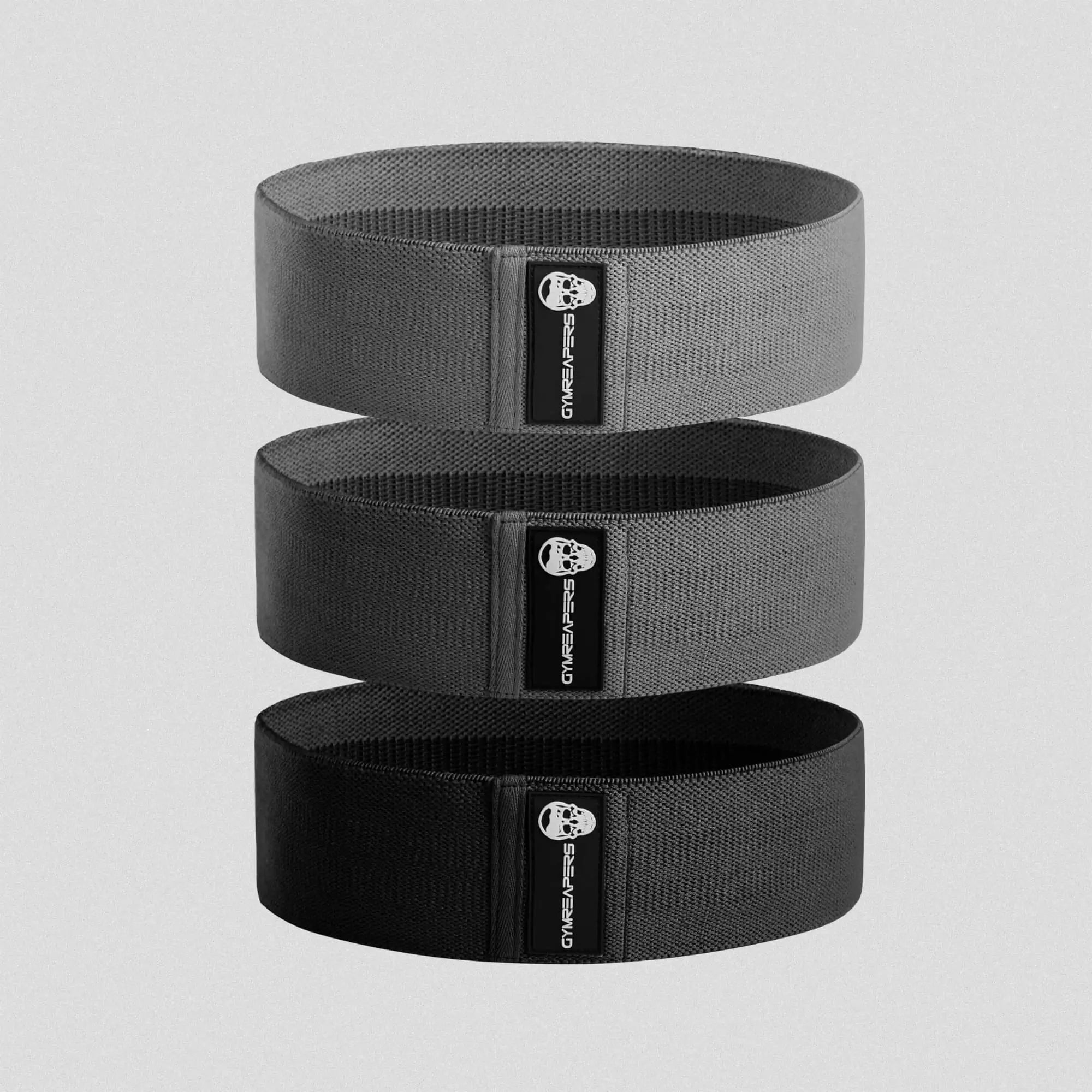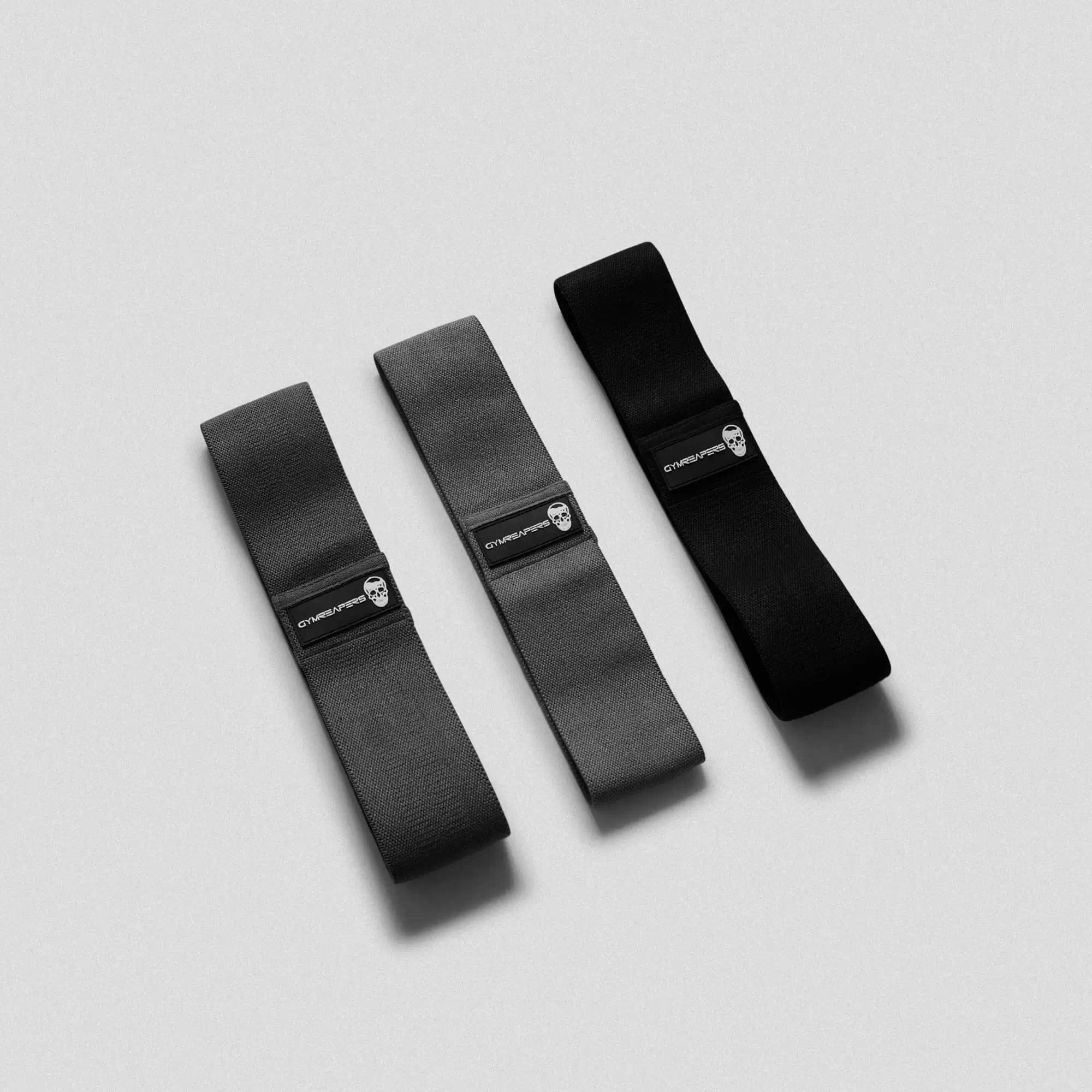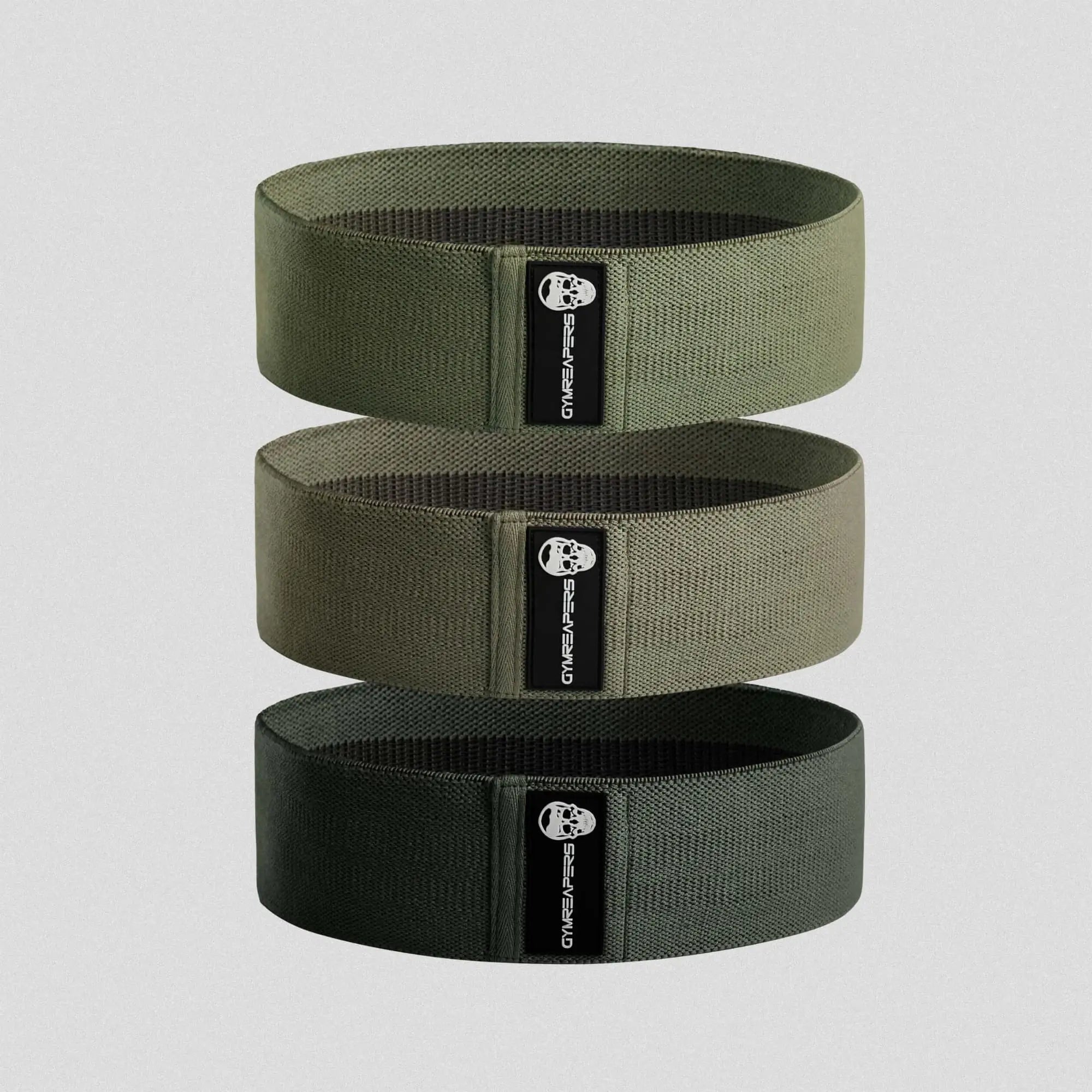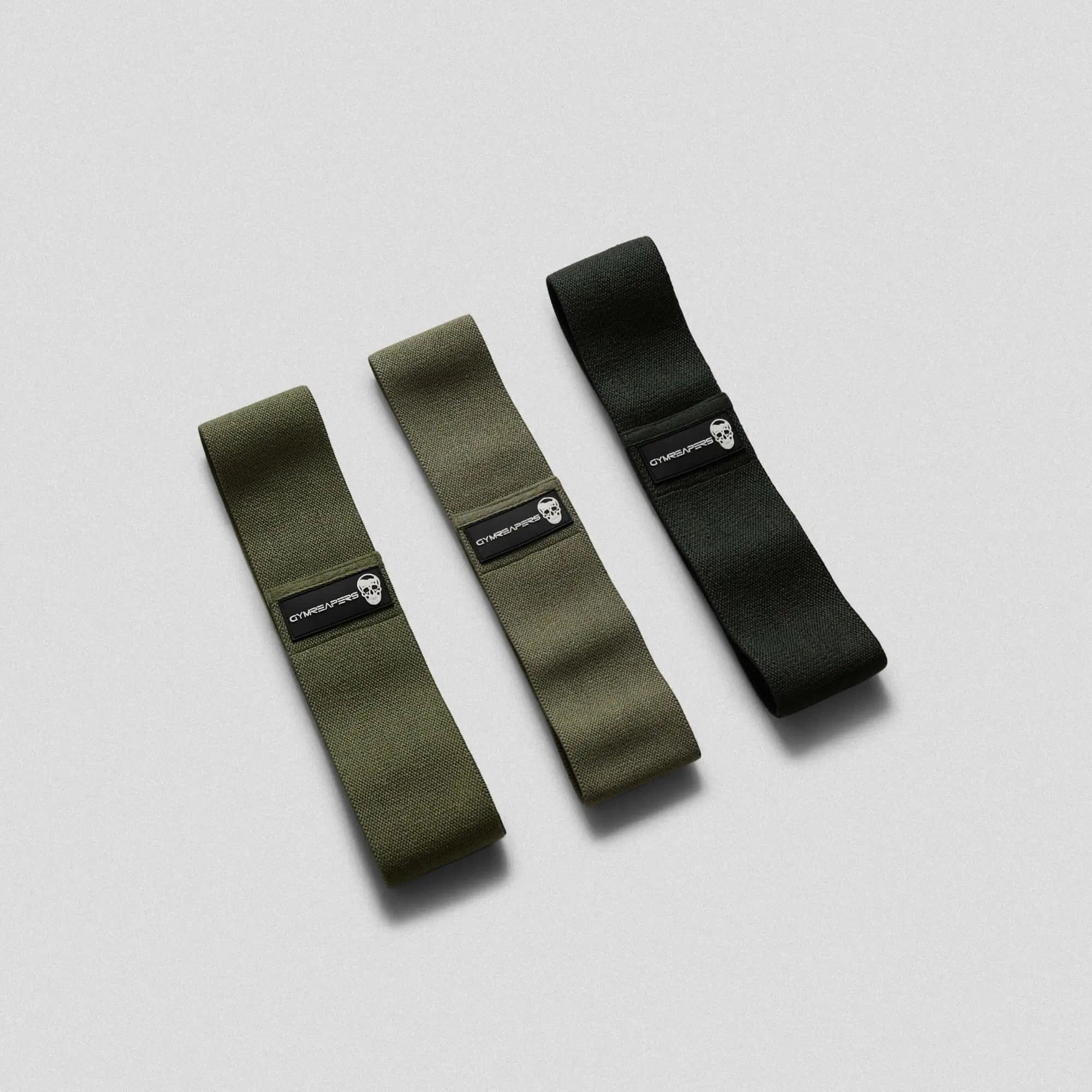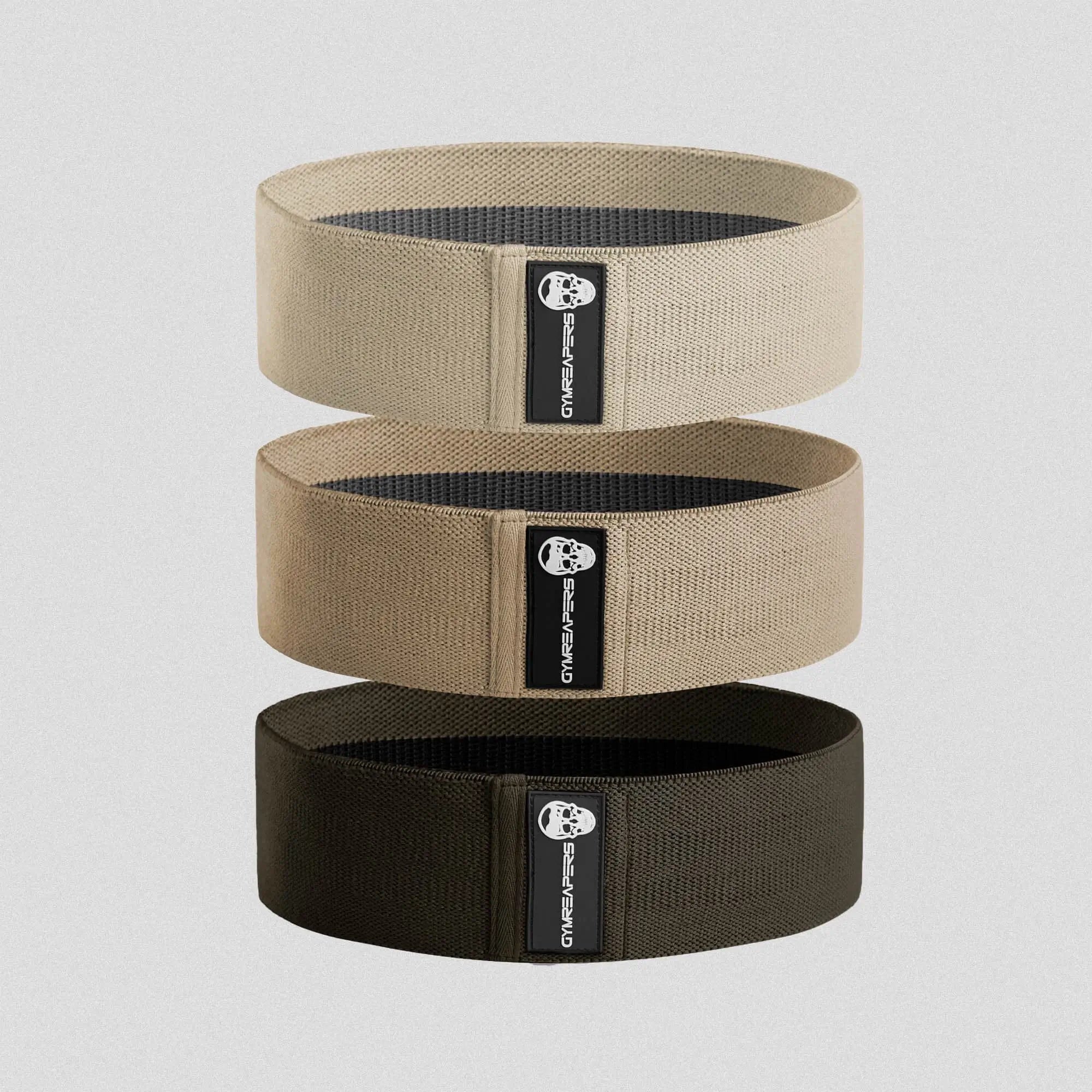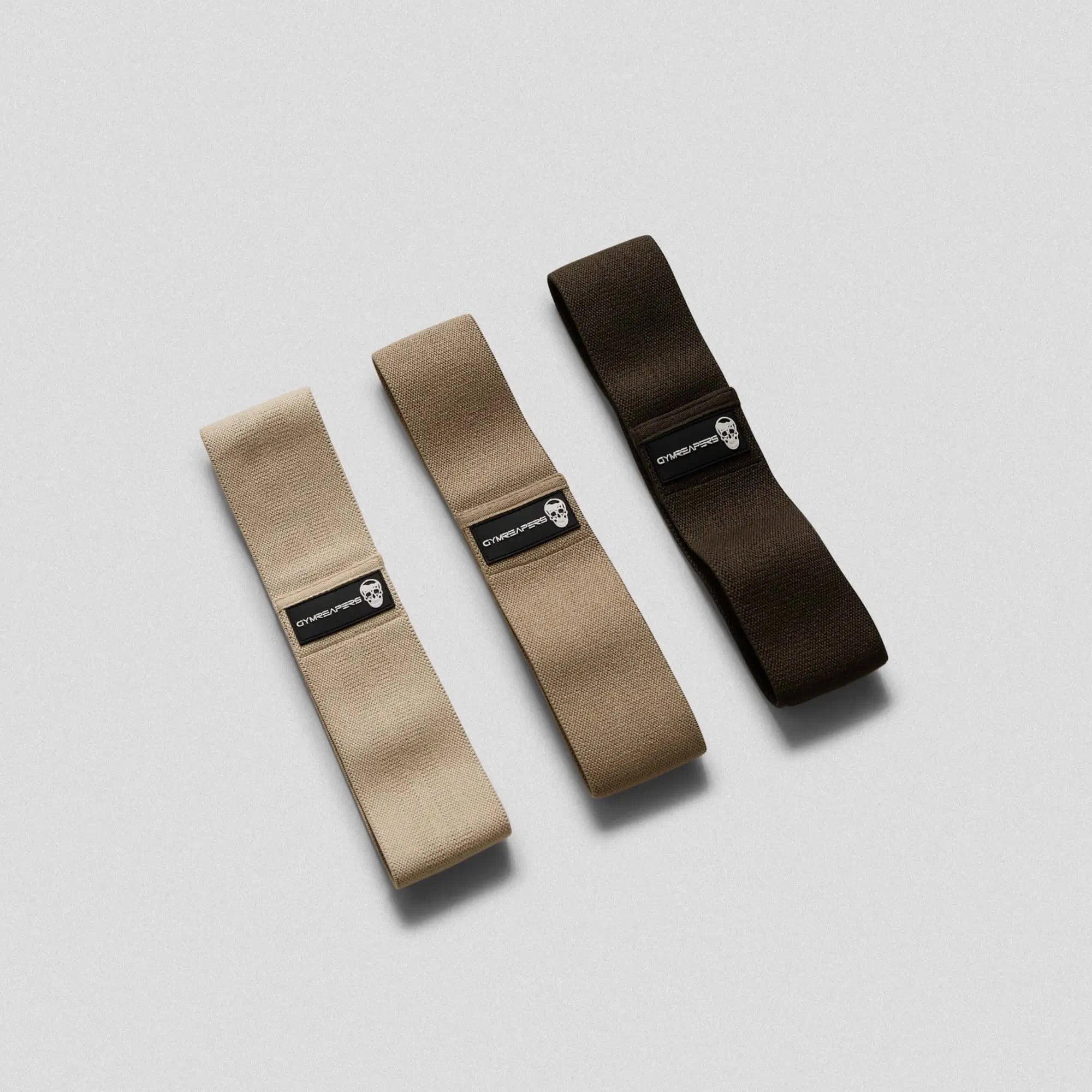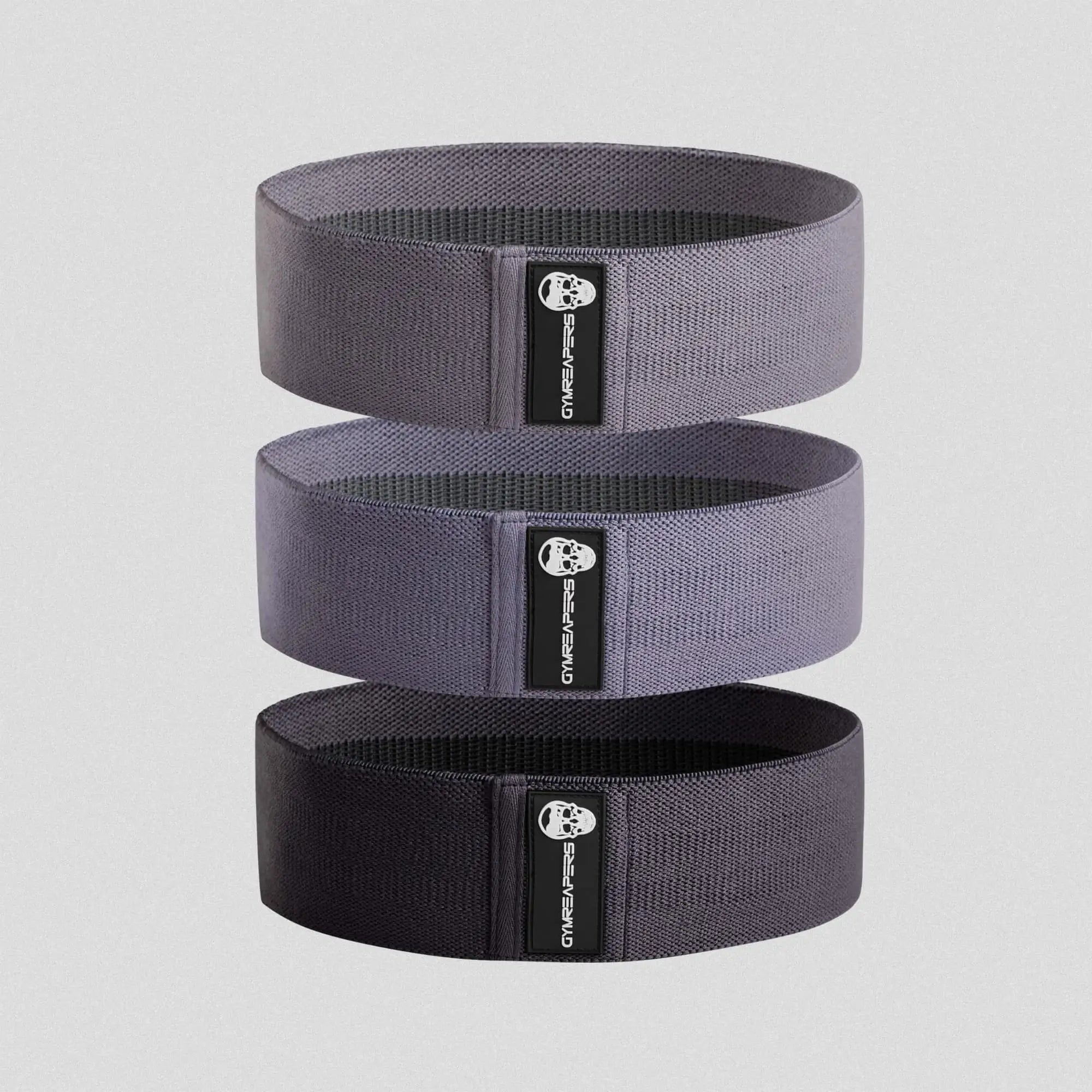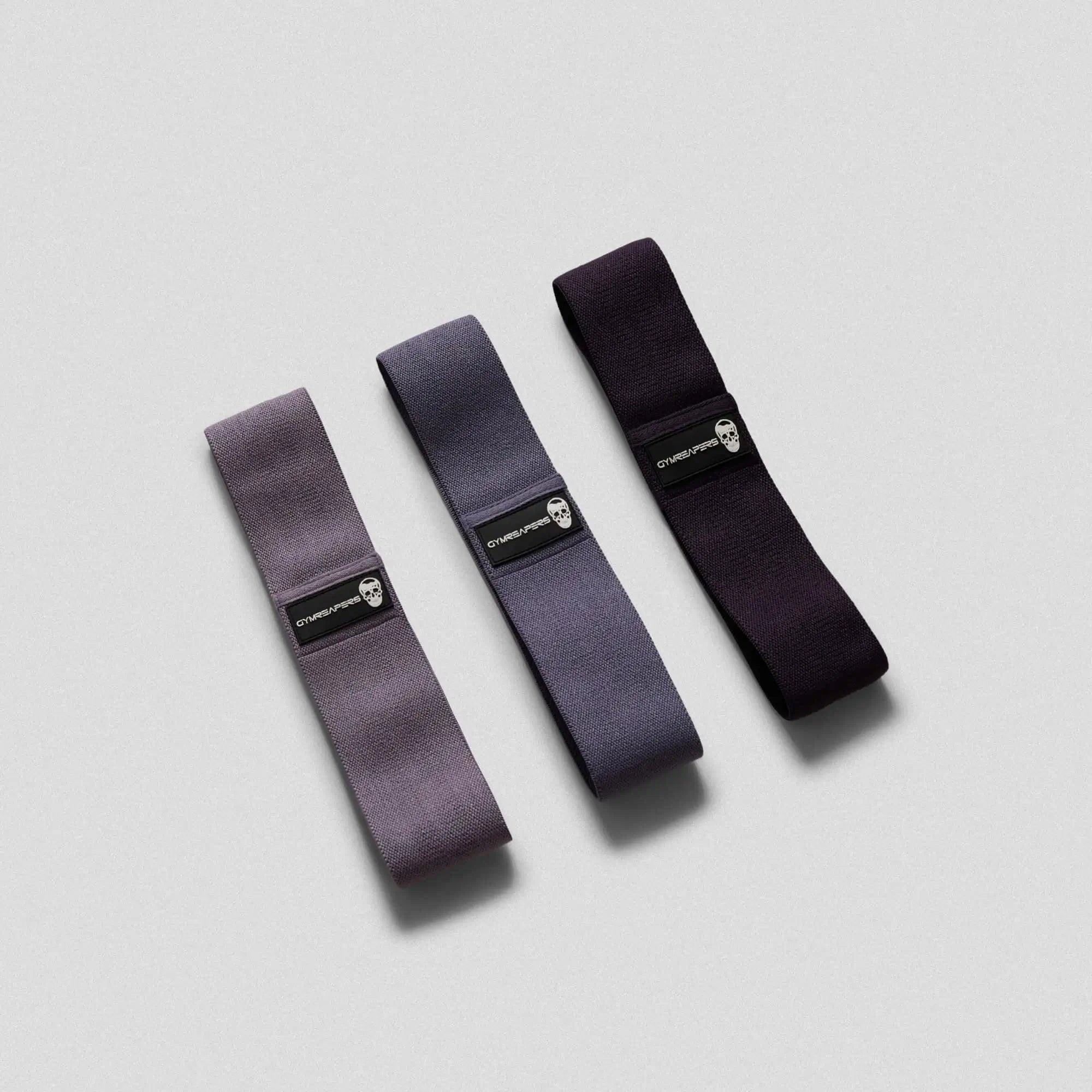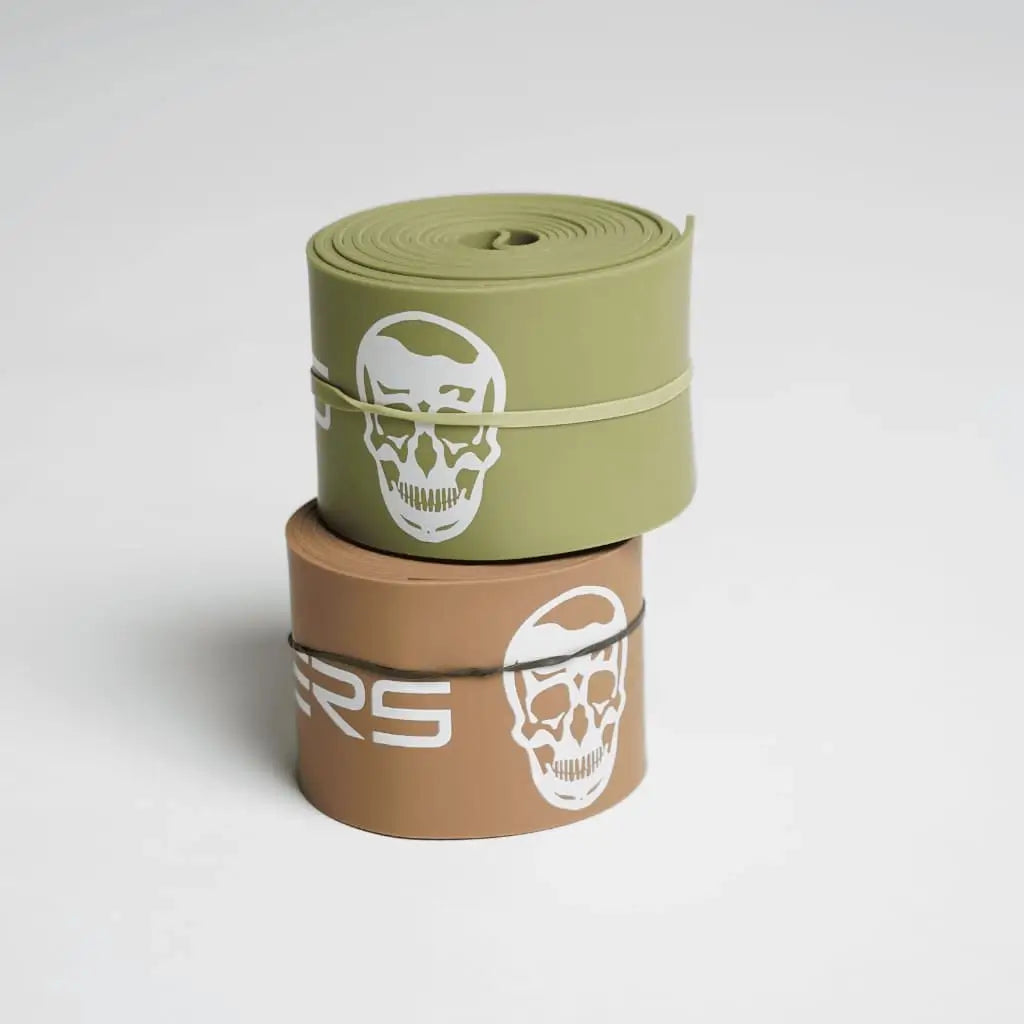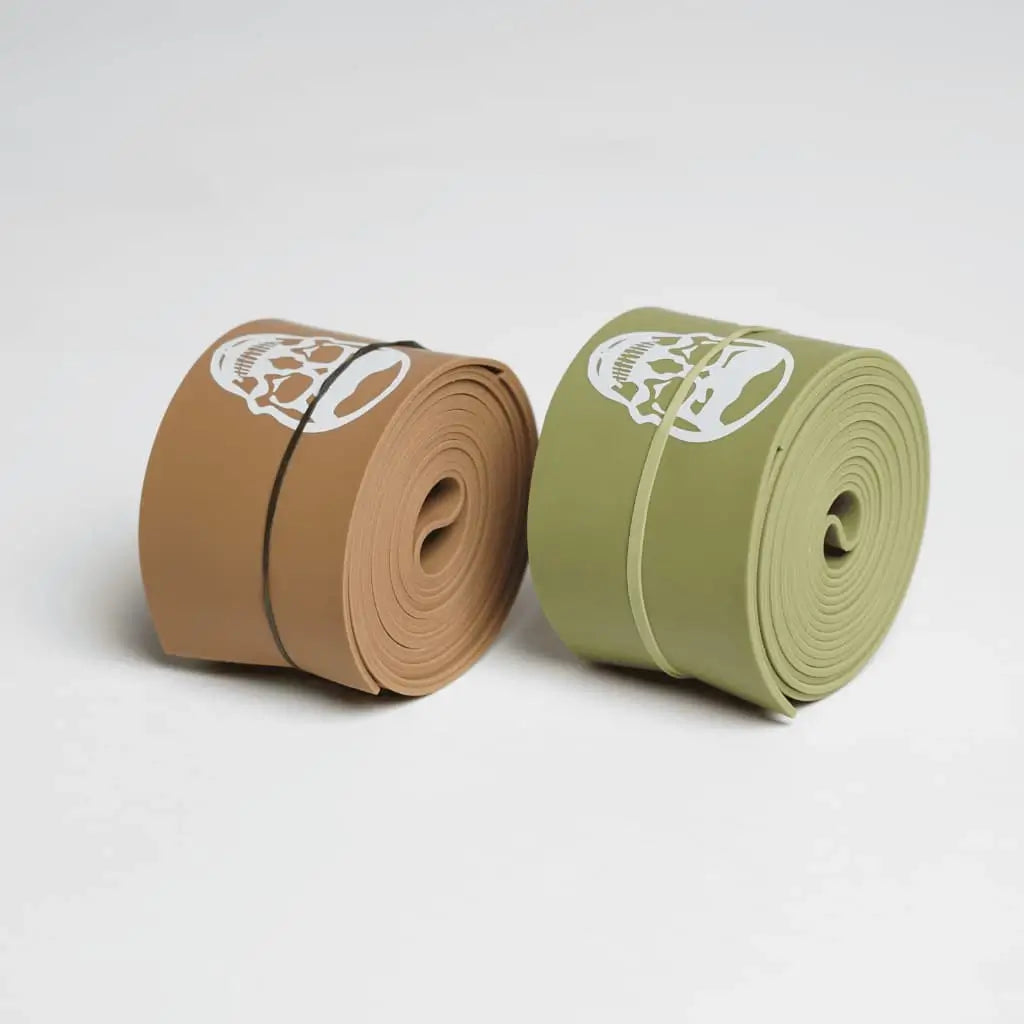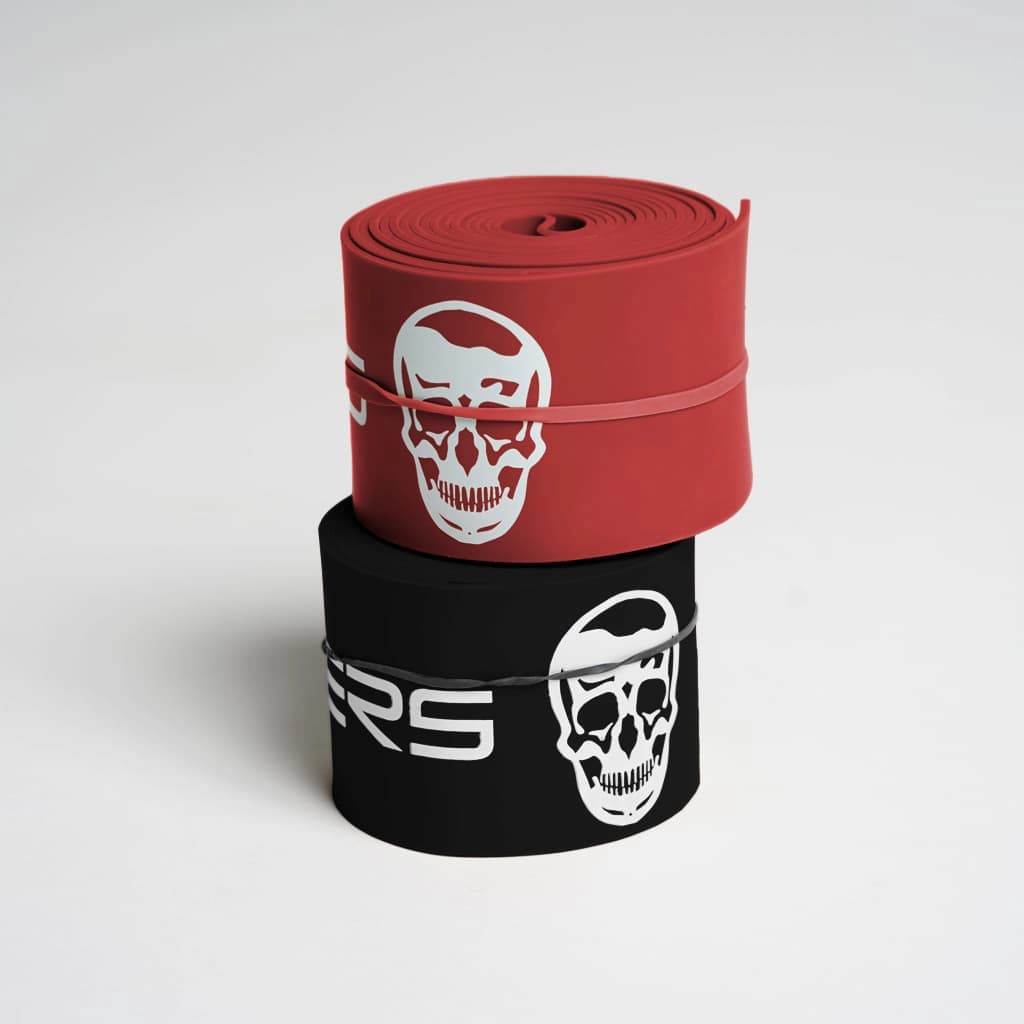A: Yes. Studies show that elastic bands can build muscle as effectively as weights when progressive overload is applied.
Resistance Bands for Every Training Environment
Whether you’re at home, on the road, or in the gym, resistance bands can help you turn any space into a training space. No matter what your fitness goals are, Gymreapers resistance bands are designed to provide versatility, durability, and real muscle-building potential in a compact package. From beginners to elite athletes, from workouts to warm-ups, banded workouts can support real strength and muscle development.
What Are Resistance Training Bands?
Resistance bands are a training tool, usually made out of elastic or rubber, that can be used to help train your muscles with variable tension. Unlike fixed weights or exercise machines, a resistance band creates tension that increases and decreases as the band stretches, creating a dynamic load.
Training bands come in a variety of lengths, styles, and resistance levels—from loop bands, to hip bands, to resistance bands with handles—and offer a complete strength training solution that fits easily inside a gym bag.
| Tool | Best For | Resistance Style | Portability | Strength Potential | Notes |
|---|---|---|---|---|---|
| Hip Bands | Glute activation, warm-ups, lower body stability | Variable (increases with stretch) | 4/5 | 3/5 | Best for sculpting and activation, not heavy loading or hypertrophy |
| Resistance Bands | Full-body workouts, mobility | Variable (more tension at peak) | 5/5 | 4/5 | Great for travel or small spaces, joint-friendly, good strength potential |
| Floss Bands | Recovery, joint prep, mobility | Light resistance | 5/5 | 1/5 | Used for warm-ups and injury rehabilitation, not intended for strength |
| Free Weights | Building muscle mass, strength training | Constant | 1/5 | 5/5 | Best for measurable progression and heavy lifting |
Resistance Bands vs. Weights: Which is Better?
Both tools have unique advantages, and the best choice depends on your goals.
Bands: Provide variable tension (heavier at peak contraction), joint-friendly training, and unmatched portability.
Weights: Deliver consistent resistance, straightforward progressive overload, and maximum strength potential.
Most serious lifters and recreational lifters use both, but bands are the most portable and affordable way to upgrade your workout routine.
When Can You Use Resistance Bands?
Resistance bands can be used whenever and wherever you have the time and space to move. Use them for warm-ups to activate muscle groups before heavy lifting, as your primary resistance tool during full-body workouts, add additional resistance to traditional body weight exercises like squats and lunges, or use them to reduce the load during band-assisted pull-ups. They’re also the perfect choice for injury rehabilitation exercises, exercising while traveling, and targeting smaller muscle groups that free-weight lifts might miss.
There is no training tool more versatile than resistance bands.
Key Benefits of Training With Exercise Bands
Versatile Full-Body Training: Training bands can replicate almost any gym exercise while providing the unique benefit of being portable and usable anywhere: banded squats, glute bridges, bicep curls, etc.
Joint Friendly Resistance: Resistance bands provide smooth and constant tension that’s easier on joints than the sudden load changes of traditional free weights.
Space Efficient Strength Training: Squeeze in a complete gym workout anywhere you go. Resistance bands take up minimal storage space, but come in a variety of weights and offer the equivalent of a full weight set (up to 150 lbs of resistance).
Progressive Overload Made Easy: Combine multiple bands, adjust your grip, or attach resistance band handles to adjust the difficulty of your workouts. No need to buy heavier weights as you get stronger.
FAQs – Training Bands
Q: Can you build muscle with resistance bands?
Q: What’s the difference between hip bands and longer training bands?
A: Hip bands (short loops) are ideal for glutes and legs. Long or handled bands are better for presses, rows, and upper-body training.
Q: Are bands good for beginners?
A: Absolutely. Light bands teach proper form, while heavier bands challenge advanced lifters. Gymreapers bands range from 20–150 lbs to grow with your strength level.
Q: How do I choose the right resistance level?
A: Light bands work for warm-ups and rehab, medium for general strength, and heavy for serious muscle building.
Q: Can bands replace weights completely?
A: For many goals, yes. Bands deliver tension and overload, and can be used in full-body workouts. Combining them with weights often gives the best results.
Q: How long do bands last?
A: With proper care, quality bands can last years. Gymreapers includes a 1-year warranty against defects, though normal wear like fading isn’t covered.
Q: Can bands be used for leg training?
A: Yes. Gymreapers hip bands are perfect for glute activation, lateral steps, squats, lunges, and hamstring curls.
Q: How do you use bands for injury rehab?
A: Always follow a therapist or coach’s guidance—do not attempt to rehabilitate an injury on your own.
No Excuses, Take Your Training to the Next Level Anytime & Anywhere.
Ready to add versatility and convenience to your routine? Explore Gymreapers’ premium training bands and discover why people worldwide rely on them for strength, mobility, and conditioning.








